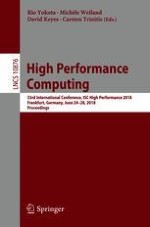2018 | Book
High Performance Computing
33rd International Conference, ISC High Performance 2018, Frankfurt, Germany, June 24-28, 2018, Proceedings
Editors: Rio Yokota, Michèle Weiland, David Keyes, Carsten Trinitis
Publisher: Springer International Publishing
Book Series : Lecture Notes in Computer Science
